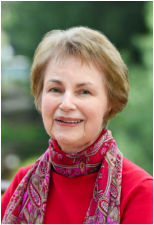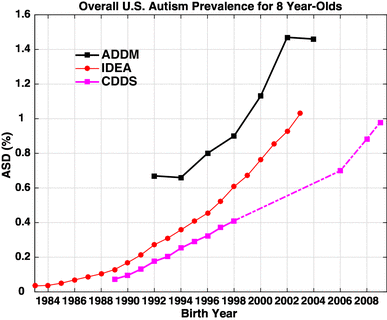Using data from the Centers for Disease Control’s Autism and Developmental Disabilities Monitoring (ADDM) Network, a new study has found nearly 30% (26.7%) of 8 year-old children with autism suffer from profound autism, with an overall birth-cohort prevalence of .46% 8-year-olds.
Children were classified as having profound autism if they met the recent Lancet commission definition of “profound autism,” that is, having autism with IQ score < 50 or being nonverbal or minimally verbal. For the children with IQ data actually available in the records, the profound autism rate was 29.4%.
“It is important to note that this 27% includes only a subpopulation most severely impaired by autism,” said Jill Escher, president of the National Council on Severe Autism. “Those with IQs of 50-85, who may have language but little ability to hold an age-appropriate conversation or benefit from regular education, would be excluded from this subpopulation. It is crucial to understand the “non-profound” population discussed in this study in no way means ‘high functioning’.” That said, she added, this data is an essential start for the urgent need to better characterize the needs of the severely impaired autism population to promote stronger research and policymaking.
Key take-aways:
Sites. The data studied included 20,135 children aged 8 with autism during 2000-2016 (excluding 2012 and 2014 when nonverbal status was not captured), from 15 sites (Alabama, Arkansas, Arizona, Colorado, Florida, Georgia, Maryland, Minnesota, North Carolina, New Jersey, South Carolina, Tennessee, Utah, Wisconsin, and West Virginia).
The percentage of children with autism who had profound autism was highest in the first study year, 2000, at 40.5% (this birth cohort is age 31 today). The lowest percentage of children was in the most recently included study year, 2016, at 24.3% (this birth cohort is age 15 today). The percentage of the autism population who had profound autism differed among sites, from 21% in Colorado to 38.3% in South Carolina.
The birth cohort prevalence of profound autism varied by site, ranging from .28% in Colorado to .64% in North Carolina. New Jersey had the highest prevalence of non–profound autism, at 2.6% of the overall birth cohort.
Prevalence over time. Over 16 years of surveillance, 2000-2016, the prevalence of non–profound autism increased dramatically, from .394% to 1.426%. The prevalence of profound autism also greatly increased, though at a lower rate, from .268% to .459%.
Challenging behaviors. Profound autism was more common among children who had documented self injurious behaviors or seizure-like behaviors than among children without these behaviors. Most children with profound autism had:
aggressive behavior (52.7%)
low adaptive functioning score ≤70 (79.4%)
self-injurious behavior (36.5%)
seizures or seizure-like behaviors (31.0%)
Lower community-level socioeconomic status and maternal education levels were associated with a higher percentage of profound autism.
Racial difference. The prevalence of profound autism among Black children was higher than among White children,while the prevalence of non–profound autism washigher among White children than among Black children.
Sex difference. While boys were significantly more likely than girls tohave autism, among autism cases, girls had 1.25 times the prevalence of profound autism as boys.
Among 8 year-old boys, .72% are estimated to have profound autism and 2.3% have non-profound autism.
Children with autism who were born preterm or had a low birthweight were more likely to have profound autism than children with autism who were not.
The median age of diagnosis for children with profound autism lower (average 46 months), compared to those with non-profound autism (average 57 months).
ADDM Network sites changed across study years and may not be representative of their entire state or the United States.
Possibility of under-ascertainment of profound autism: The study classified children as verbal if they had no verbal ability information in their records, which might have led to underascertainment of nonverbal/minimally verbal status; furthermore, the ADDM case definition for nonverbal was stricter than the case definition for minimally verbal from other research.
The term “profound autism” comes from a 2021 Lancet Commission on the Future of Care and Clinical Research in Autism report. That report stated that the term “profound autism” was critical to distinguish people who have high dependency needs from the more verbally and intellectually able population of people with autism. In reviewing several international datasets of people with autism, the Lancet Commission estimated that close to 30 percent of the autism population falls into the category of profound autism.
Children and adults with profound autism often require round-the-clock care to assist with daily living activities and to keep them safe from self-injurious behaviors, wandering and seizures. In her keynote address at the 2022 Autism Europe Congress, Dr. Catherine Lord, the George Tarjan Distinguished Professor of Psychiatry at the Semel Institute of Neuroscience and Human Behavior at the University of California, Los Angeles, reported results of a 30-year long longitudinal study that showed that the outcomes of people with profound autism are drastically different and far worse than the outcomes of those who are higher functioning.
“We need to know how many people have profound autism so that we can properly plan for their school and residential needs and improve the services they receive,” said Alison Singer, president of the Autism Science Foundation and co-author of the report, “Their needs are going to be very different than those of an autistic person graduating from Harvard Law School.”
Escher warns that the data not be misrepresented. “Some news outlets are equating ‘non-profound’ to ‘high-functioning’ when this is clearly untrue. Having an IQ 50 or over hardly qualifies as high-functioning," she said. "This data is a radical undercount of ASD children with obvious and severe disability."






